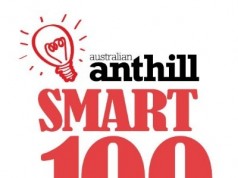The following SMART 100 profile and the information it contains is a duplication of content submitted by the applicant during the entry process. As a function of entry, applicants were required to declare that all details are factually correct, do not infringe on another’s intellectual property and are not unlawful, threatening, defamatory, invasive of privacy, obscene, or otherwise objectionable. Some profiles have been edited for reasons of space and clarity. More about the SMART 100.
This innovation initially came to life when…
Researchers at the ANU collaborated with Volvo in Sweden to explore advanced driver safety systems based on monitoring the driver (instead of monitoring the vehicle or environment). Using a video camera and video image analysis the team learnt to accurately track and monitor the driver’s face and facial features. That technology allows the driver’s eyes to be monitored (open or closed?) and to track the direction the driver is facing (looking at the road or not?). Crucial innovations along the way include coping with eyeglasses, sunglasses, working night and day, and being fully automatic and remaining off-body/non-contact.
WHAT & HOW
The purpose of this innovation is to…
Bluntly, it is to prevent death and injury to drivers and other road users. Fatigue and distraction is one of the biggest killers on our roads. The DSS aims to help drivers avoid those events and their catastrophic outcomes.
It does this by…
Detecting in real time the microsleeps and distracted driver behaviours and then raising feedback alarms to bring the driver’s attention back to the road before this event develops into a catastrophic outcome. In heavy vehicle fleets (mining and long haul transport operations) real-time integration with dispatch/controller-room operators allows additional second tier interventions to be enabled, further improving outcomes.
PURPOSE & BENEFITS
This innovation improves on what came before because…
There was nothing before. Before developing the DSS all efforts to manage driver fatigue and distraction fell to the driver to self-manage (using log books and managing driving hours, etc.). Others have also been pursuing alternate technology-based solutions parallel to the DSS, so this is a very new field of endeavour.
Its various benefits to the customer/end-user include…
It helps a driver stay awake and focused on the roadway ahead, and avoid accidents, injury or death arising from driver inattention. The DSS is very convienent, easy to use, and non-invasive (it is non-contact and fully automatic).
COMPETITIVE LANDSCAPE
In the past, this problem was solved by…
A very indirect method: using log books to enforce driving hours regulations and hoping accident rates decline. Those regulations are based on limited work hours, which implies availability of rest time, which implies rest is taken, which implies less fatigued drivers, which implies fewer microsleeps, resulting in fewer accidents. Many assumptions and implied links to achieve reduced microsleeps. The DSS directly targets microsleeps!
Its predecessors/competitors include…
*driver monitoring systems that require the driver wear a special pair of glasses connected to the system
*systems monitoring how well the vehicle is being steered (steering adjustment frequency or optimal trajectory within laneway)
*various other obtuse ideas/products
TARGET MARKET
It is made for…
*heavy goods transport, particularly hazardous or high value goods (initially the mining/resource industry and then long haul road transport operations)
*other commercial, and military transport vehicles
*passenger vehicles
*train operator, commercial aviation
DISTRIBUTION STRATEGY
It is available for sale through…
The DSS is marketed through a combination of direct sales and regional representation, particularly in significant mining areas. We’re expanding both our direct sales team and regional partnerships as needed.
Our marketing strategy is to…
Provide the best holistic offering (product and service) that solves transport fatigue issues for fleet operators, DOMINATE the “driver fatigue” market in the global resource and ancillary services sectors with extension into road transport sectors (as they futher recover from the GFC). Further extension into OEM passenger vehicle markets through licensing technology to automotive tier 1 supplier.
SUPPORTING IMAGES AND/OR VIDEO
SHOW YOUR SUPPORT FOR THIS INNOVATION
While the judging is now officially over, you can still show your support for this innovation in one of the following three ways:
- Hit the VOTE UP button: Top left of each page (Not available for IE users)
- Trigger a Reaction: Re-Tweet, Like on Facebook, etc.
- Leave a Comment: Share the love!
To check out the Anthill SMART 100 Readers’ Choice winner for 2010, click here.





![How to give good headlines, and create emails that get opened [CHEAT SHEET]](https://anthillonline.com/wp-content/uploads/2013/11/7-steps-cheatsheet-3d-cover-nuova--300x194.png)
![How to market your business when you don’t have a business yet [CHEAT SHEET]](https://anthillonline.com/wp-content/uploads/2016/01/oli-gardner-memes-02-100x75.jpg)
![How To Grow Your Business and Profits with Jason Cunningham [CHEAT SHEET]](https://anthillonline.com/wp-content/uploads/2015/07/Cunningham-100x75.png)
![Strategic Alliances with Simone Novello [FREE INFOGRAPHIC]](https://anthillonline.com/wp-content/uploads/2015/08/Capture6-100x75.jpg)
![The Alchemy of Negotiation with Matt Lohmeyer [FREE REPORT]](https://anthillonline.com/wp-content/uploads/2015/07/Capture-100x75.jpg)

![Faster than a speeding bullet: The Femto camera set to transform photography [VIDEO]](https://anthillonline.com/wp-content/uploads/2012/08/AppleBullet.jpg)
![Scientist? Entrepreneur? This teenager is doing amazing things to change the world [VIDEO]](https://anthillonline.com/wp-content/uploads/2013/06/ANN-300x350.jpg)
![Learn how to use Instagram as a business tool [FREE INFOGRAPHIC]](https://anthillonline.com/wp-content/uploads/2012/12/nickelbackinstagram-300x194.jpg)
![How to zig when everyone else is zagging, with Julio De Laffitte [CHEAT SHEET]](https://anthillonline.com/wp-content/uploads/2015/08/Capture2-100x75.jpg)
![How to price your product or service in 8 steps with Steve Major [FREE INFOGRAPHIC]](https://anthillonline.com/wp-content/uploads/2015/07/Screen-Shot-2015-11-26-at-11.40.10-100x75.png)
![THE ULTIMATE CASHFLOW CHECKLIST [FREE DOWNLOAD]](https://anthillonline.com/wp-content/uploads/2016/06/james-Seven-simple-strategies-to-cut-costs-04.pdf-Box-2016-06-30-13-49-35-100x75.png)
![New Zealand’s Xero eyes US IPO, further disruption as subscribers increase [INFOGRAPHIC]](https://anthillonline.com/wp-content/uploads/2014/07/sruuuuujana-212x194.png)
![Ever wonder if your ‘content marketing’ is really just crap? You gotta see this! [INFOGRAPHIC]](https://anthillonline.com/wp-content/uploads/2014/08/content-100x75.jpg)
![7 Business Lessons From Game of Thrones [INFOGRAPHIC]](https://anthillonline.com/wp-content/uploads/2014/10/infographic-games-of-thrones-041-100x75.jpg)
![How to build your own Media Empire… In seven steps with Nathan Chan [INFOGRAPHIC]](https://anthillonline.com/wp-content/uploads/2014/10/Nathan-Chan-Infographic-e1413419529176-100x75.jpg)
![5 Business Lessons From Tinder [INFOGRAPHIC]](https://anthillonline.com/wp-content/uploads/2014/10/Tinder-Elegant-Infographic-100x75.jpg)



